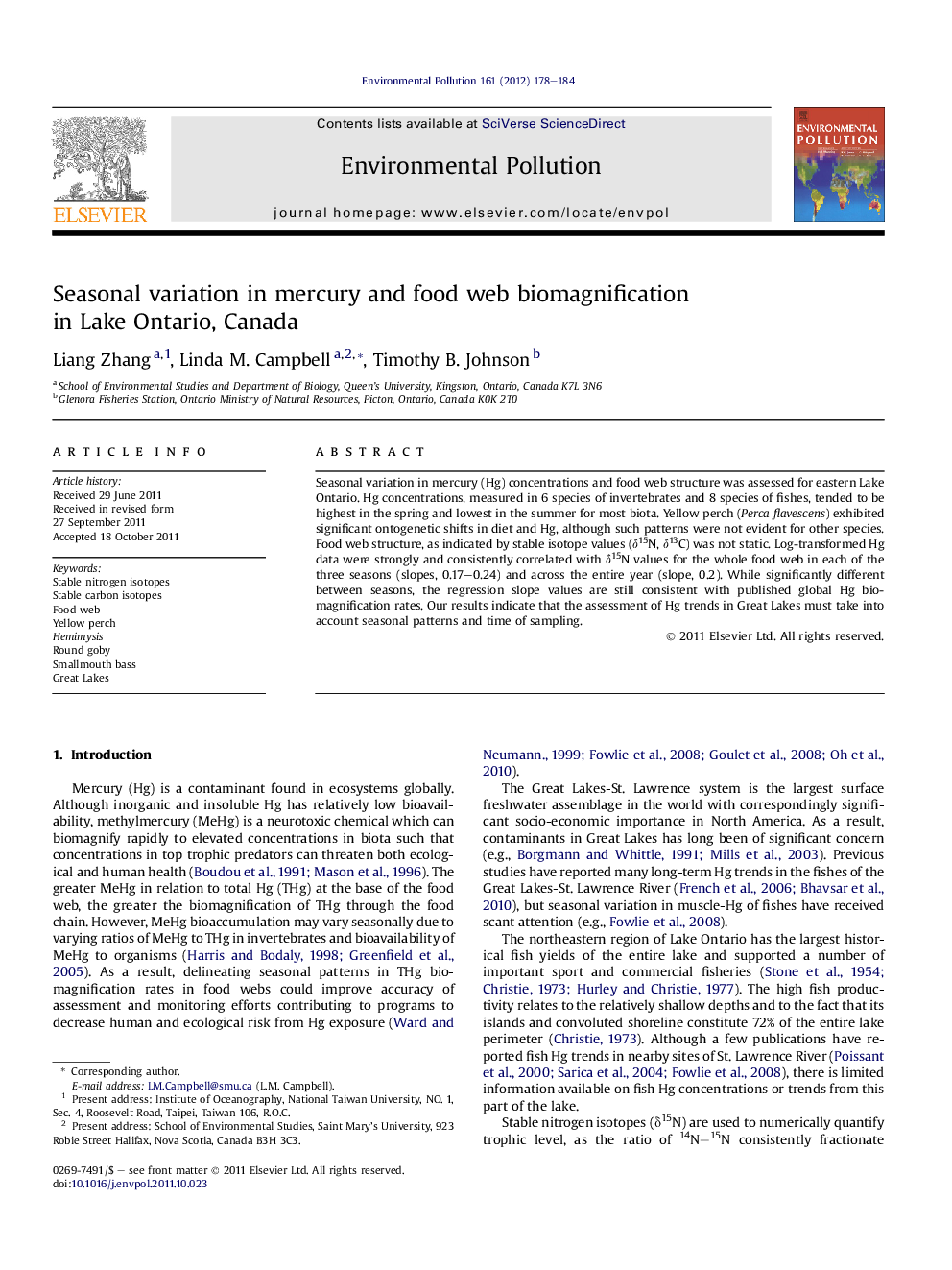| Article ID | Journal | Published Year | Pages | File Type |
|---|---|---|---|---|
| 4425118 | Environmental Pollution | 2012 | 7 Pages |
Seasonal variation in mercury (Hg) concentrations and food web structure was assessed for eastern Lake Ontario. Hg concentrations, measured in 6 species of invertebrates and 8 species of fishes, tended to be highest in the spring and lowest in the summer for most biota. Yellow perch (Perca flavescens) exhibited significant ontogenetic shifts in diet and Hg, although such patterns were not evident for other species. Food web structure, as indicated by stable isotope values (δ15N, δ13C) was not static. Log-transformed Hg data were strongly and consistently correlated with δ15N values for the whole food web in each of the three seasons (slopes, 0.17–0.24) and across the entire year (slope, 0.2). While significantly different between seasons, the regression slope values are still consistent with published global Hg biomagnification rates. Our results indicate that the assessment of Hg trends in Great Lakes must take into account seasonal patterns and time of sampling.
Graphical abstractTotal mercury concentrations and trophic level (δ15N) regressions for organisms from the littoral Lake Ontario food web of Waupoos in 2009. Filled circles represent invertebrates while open circles represent fish. Dashed lines represents the regression between δ15N and THg of “whole” food web (log-Hg-δ15N regression equations in the upper left hand corner in each plot), and solid lines represents the regression between δ15N and THg of “fish-only” food web (log-Hg-δ15N regression equations in the lower right hand corner of each plot). Note that the y-axis is untransformed Hg concentrations plotted along a logarithmic scale, while the equations are based on log-transformed Hg values.Figure optionsDownload full-size imageDownload as PowerPoint slideHighlights► Most fish in littoral Lake Ontario had higher Hg concentrations in spring and lower Hg in summer. ► Log Hg consistently biomagnified throughout the food web in each season and for the year. ► Biomagnification rates (e.g., log Hg-δ15N slopes) vary significantly by season. ► This was attributed to variable Hg concentrations and the composition of sample set in each season.
